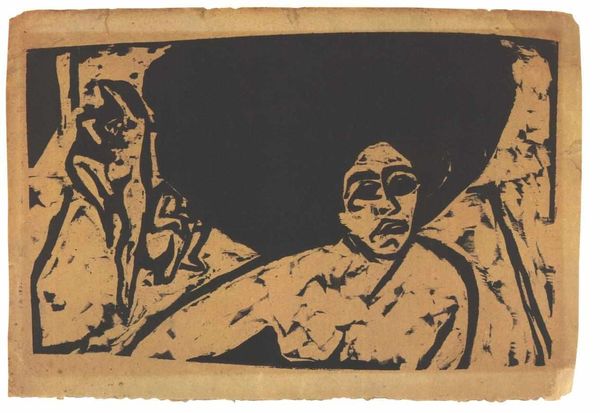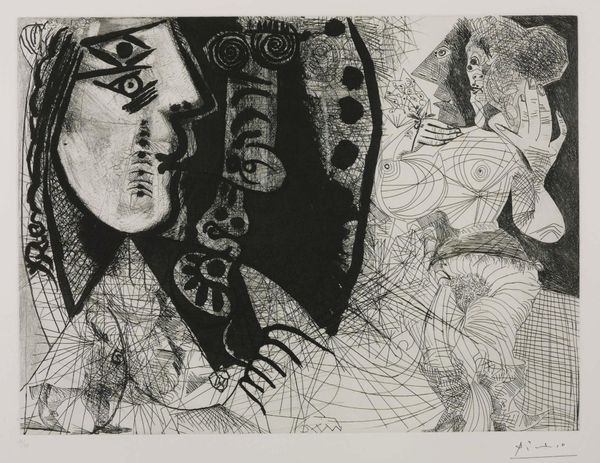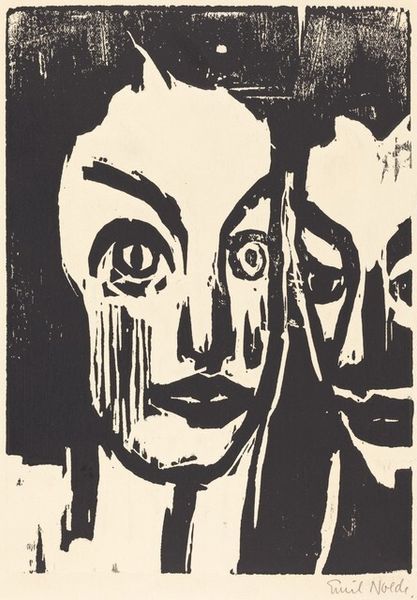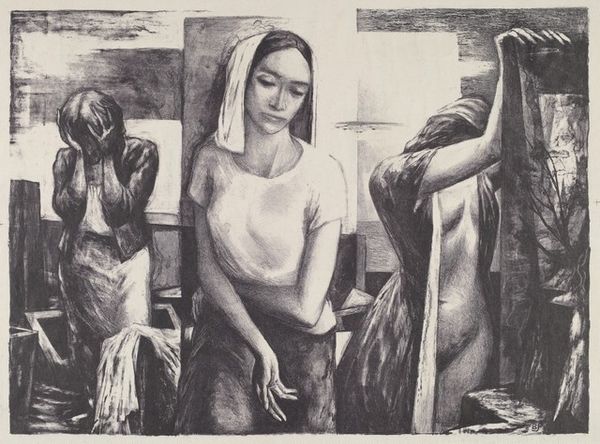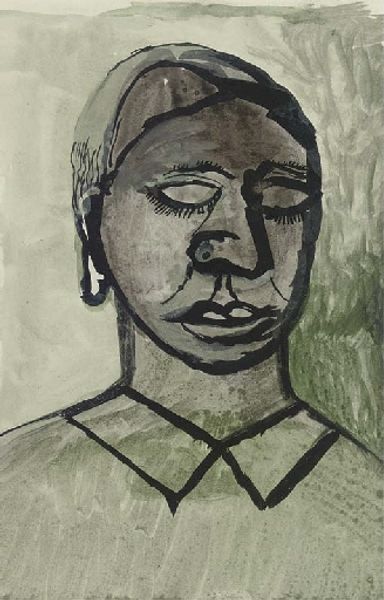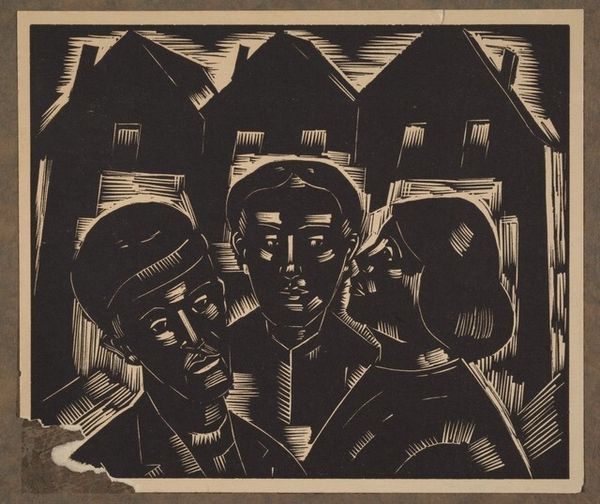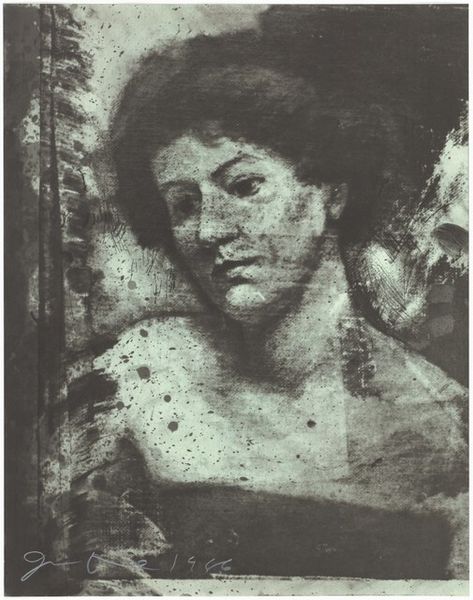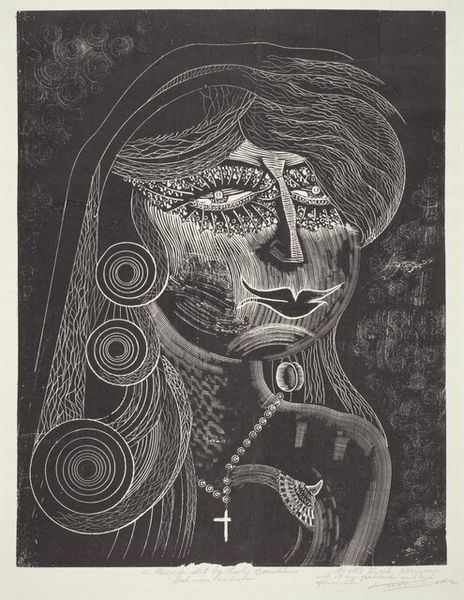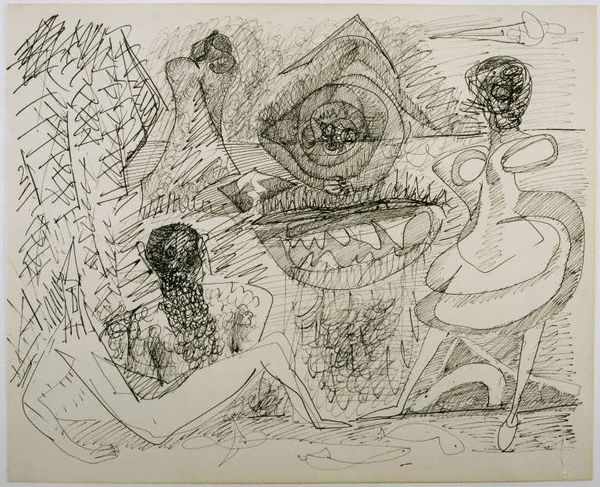
Dimensions: image: 39.69 × 54.29 cm (15 5/8 × 21 3/8 in.) sheet: 56.52 × 76.2 cm (22 1/4 × 30 in.)
Copyright: National Gallery of Art: CC0 1.0
Elizabeth Catlett made "Lovey Twice" in 1946, but the lithographic printmaking process means it's all about layers, pressure, and the magic of pulling an image from a stone. Look at how Catlett uses the black ink. It's not just a solid color; it's a range of tones, built up through tiny marks, creating depth and texture. The way the figures emerge from the mottled background gives them this weight, and it’s as if she’s built them up from the ground. Check out the way the hair is handled – a mass of small, energetic strokes that almost vibrate. Catlett’s work often explores themes of identity, resilience, and the Black experience. You can see echoes of Käthe Kollwitz in Catlett’s work, particularly in the way both artists use printmaking to convey social messages and human emotion. Both artists leave space for the viewer to bring their own experiences to the image.
Comments
No comments
Be the first to comment and join the conversation on the ultimate creative platform.

